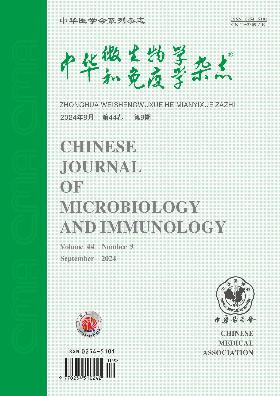Whole genome sequencing of SARS-CoV-2 isolated in Guangdong Province and factors influencing the sequencing
Q4 Immunology and Microbiology
引用次数: 0
Abstract
Objective To obtain the genome sequences of SARS-CoV-2 in respiratory specimens in Guangdong Province with next-generation sequencing (NGS) and analyze the factors influencing sequencing. Methods Eight upper and lower respiratory tract specimens were collected from patients with SARS-CoV-2 infection in Guangdong Province in January 2020. RNA library construction was used to obtain the genome sequences of SARS-CoV-2. A bio-informatics software package (CLC Genomics Workbench 12.0) was used to analyze and compare the genomic sequences. Results Five SARS-CoV-2 genome sequences were obtained from the eight specimens and two were obtained from lower respiratory tract specimens. The nucleotide homology to SARS-CoV-2 was 97.74%-99.90%. The Ct values were lower, while the sequencing depth, coverage, relative abundance and genome integrity were higher in sequencing the SARS-CoV-2 in lower respiratory tract specimens. Conclusions The low Ct value of SARS-CoV-2 in the samples was good for sequencing. Key words: SARS-CoV-2; Next-generation sequencing; Influencing factor广东省SARS-CoV-2分离株全基因组测序及影响因素分析
目的利用新一代测序技术(NGS)获得广东省呼吸道标本中SARS-CoV-2的基因组序列,并分析影响测序的因素。方法采集2020年1月广东省SARS-CoV-2感染患者的8例上、下呼吸道标本。利用RNA文库构建获得SARS-CoV-2的基因组序列。使用生物信息学软件包(CLC Genomics Workbench 12.0)对基因组序列进行分析和比较。结果从8份标本中获得5个SARS-CoV-2基因组序列,从下呼吸道标本中获得2个基因组序列。与SARS-CoV-2核苷酸同源性为97.74% ~ 99.90%。下呼吸道标本SARS-CoV-2测序的Ct值较低,测序深度、覆盖率、相对丰度和基因组完整性较高。结论样品中SARS-CoV-2的低Ct值有利于测序。关键词:SARS-CoV-2;新一代测序;影响因素
本文章由计算机程序翻译,如有差异,请以英文原文为准。
求助全文
约1分钟内获得全文
求助全文
来源期刊

中华微生物学和免疫学杂志
Immunology and Microbiology-Virology
CiteScore
0.50
自引率
0.00%
发文量
6906
期刊介绍:
Chinese Journal of Microbiology and Immunology established in 1981. It is one of the series of journal sponsored by Chinese Medical Association. The aim of this journal is to spread and exchange the scientific achievements and practical experience in order to promote the development of medical microbiology and immunology. Its main contents comprise academic thesis, brief reports, reviews, summaries, news of meetings, book reviews and trends of home and abroad in this field. The distinguishing feature of the journal is to give the priority to the reports on the research of basic theory, and take account of the reports on clinical and practical skills.
 求助内容:
求助内容: 应助结果提醒方式:
应助结果提醒方式:


